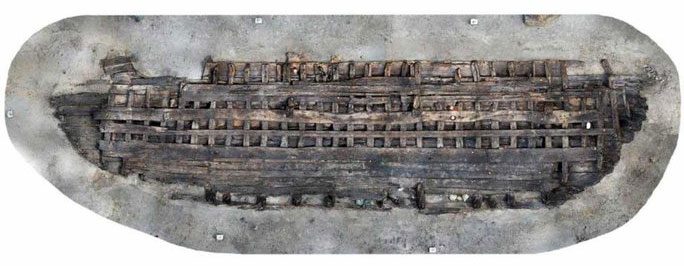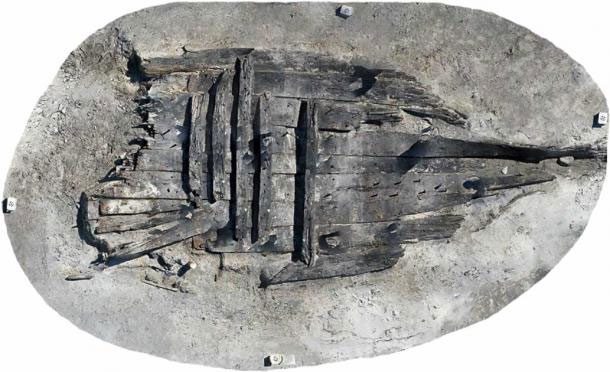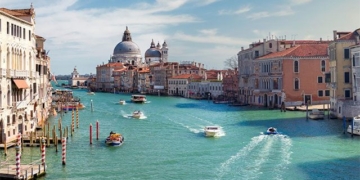On the Baltic Sea coast of Sweden, two ghost ships from completely different origins lay side by side, vanishing into the depths of the sea simultaneously in the 14th century, only to return in a haunting manner.
According to Ancient Origin, this eerie duo was first revealed in the spring of 2021 along the Baltic coast, accidentally unearthed by workers constructing a railway tunnel near Varberg, Halland County, Sweden.
However, recent analyses have shown that these ghostly shipwrecks are unique treasures in many aspects, containing well-preserved cargo that reveals a wealth of historical, commercial, and political data from the 14th century.

One of the two shipwrecks revealed among the sand – (Photo: Arkeologerna).
The first ghost ship – Varbergskoggen 1 – was constructed from timber harvested around 1346, sourced from forests in the Netherlands, Belgium, and France; while the second ship – Varbergskoggen 2 – was built from wood in northern Poland between 1355 and 1357.
This indicates that the two ships did not sail together on ancient voyages but, through some mysterious means, ended up lying side by side – just 9 meters apart – and simultaneously sank into the sea.

Artifacts found in unexpectedly good condition – (Photo: Arkeologerna).
One of these ghost ships is the most complete shipwreck ever discovered in Sweden, while the other is only slightly less intact, showing no signs of damage, leaving archaeologists “stumped” regarding the cause of the sinking.
According to the archaeological company Arkeologerna, which led the excavation, they discovered a large quantity of household items within the two ships, including wooden spoons, wooden barrels, leather shoes… items that the ships were transporting for sale or trade.

Wooden planks from the ship are well-preserved enough to reveal their origin – (Photo: Arkeologerna).
Scientists are currently analyzing these goods in hopes of uncovering clues about the catastrophic accident the two ghost ships experienced nearly 700 years ago. Bad weather is believed to be the primary cause, especially after the discovery of the cargo, which completely rules out the theory of piracy.
Regardless of the answer, this remains a unique treasure, as besides their value as artifacts, the cargo from the ships will help scientists learn about the people who traded them and that historical period.
This discovery also continues to cast an ethereal shadow over the Baltic coastal region, where an unusually high number of intact shipwrecks have been found, a phenomenon insufficiently explained by the composition of the seawater.





















































